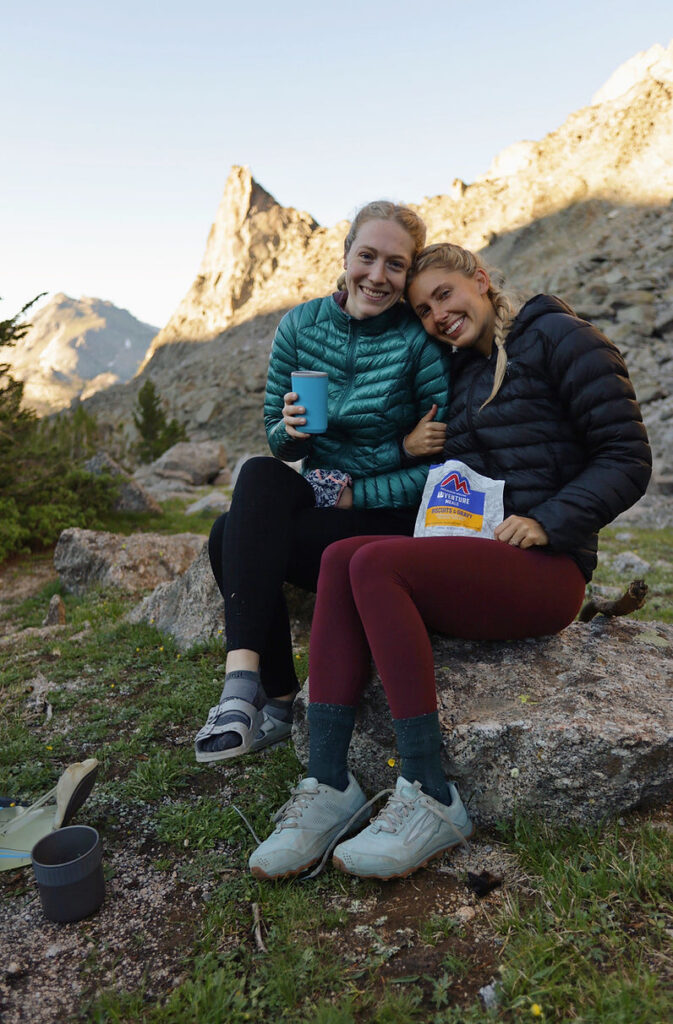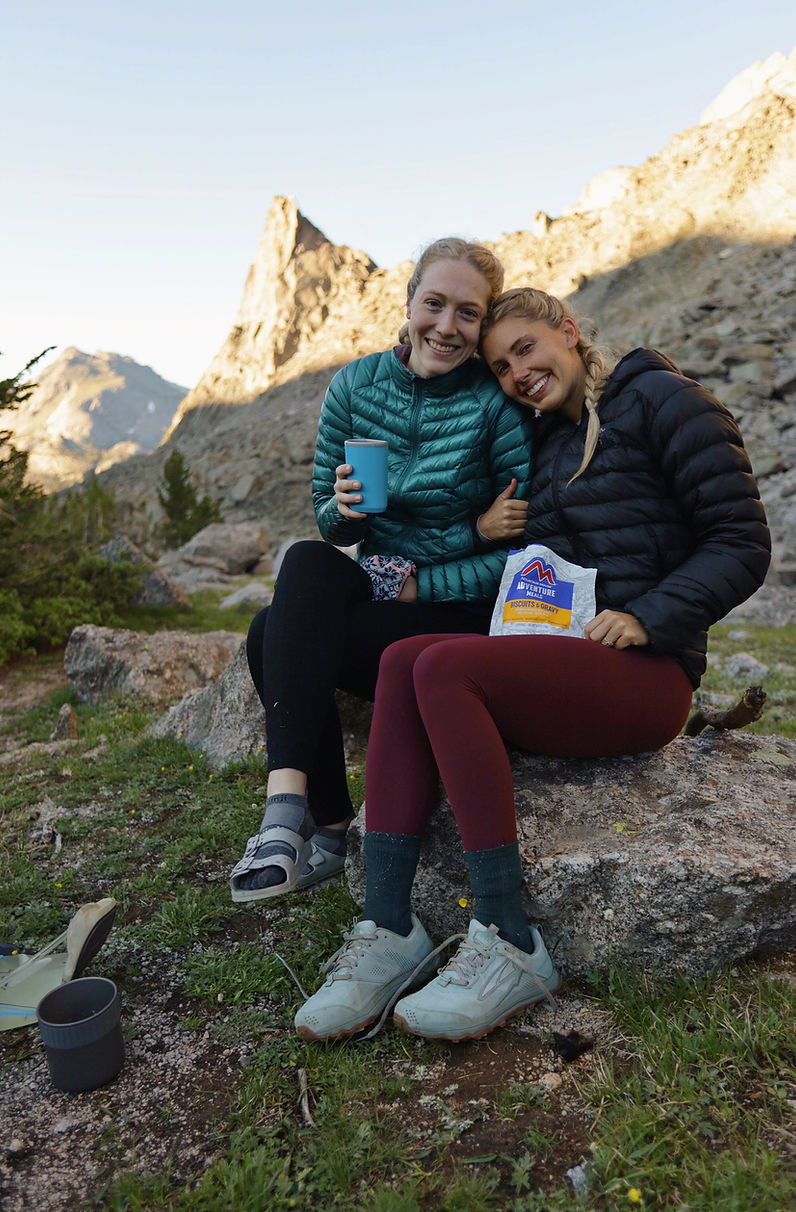Want to hit the trails but wondering what to eat to feel your best? Welcome to trail nutrition 101! Food is fuel day to day, but especially before, during and after hiking! So how do we structure our meals around this active hobby? I’ve got your back with a few different scenarios in this blog divided up into pre, intra, and post hike breakdowns. While everyone is different and these are just general guidelines, they act as an awesome place to start with certain strategies you can build on. Please note that if you are pregnant or breast-feeding you will need more calories than the amounts listed below for the average female hiker.

If you would rather listen, check out this episode over on the Fit For Hiking Podcast. Without further ado, let’s jump in!
PRE-HIKE
Scenario 1: A quick and intense 1-3 mile hike that you are close in proximity to – you are going to want a quick jolt of energy with a higher glycemic carb to fill your glycogen stores. Think things like fruit, granola, toast, etc. that are “naked” carbs (not paired with protein, fiber, or healthy fat).
Scenario 2: A longer duration hike, or you have an hour+ drive to the trailhead – you’re going to want a slower-to-absorb more balanced meal that has carbs paired with protein. Make sure that you have sustained energy and fuel with things like nonfat greek yogurt and fruit, toast with eggs, a banana with some chicken sausage on the side, egg scramble with potato, etc. These options will sustain your energy out longer, allowing you to get to the trailhead and sustain you for the first few miles on trail.
Note: it is typically better to avoid harder to digest things such as high fiber, high fat, or starchy meals. A little is fine if that is what your body is used to breaking down, however, the primary focus of your meals should be a moderate size portion of carbohydrates and protein.
INTRA-HIKE:
Scenario 1: 1-3 miles with 500ft or less of elevation gain – this is going to be a less strenuous and easy hike. Bringing something like a granola or protein bar for a snack will probably suffice if you have fueled properly pre-hike. Please note that you should always carry some sort of food item with you just in case as part of the 10 essentials.
Scenario 2: 1-3 miles with 500ft or more of elevation gain OR a 4-6 mile hike with less than 500ft of gain – these two options vary, but the premise of nutrition here is similar. You are going to want something a bit more calorically dense to keep you fueled. The shorter and steeper hike is going to require fuel just as the longer more moderate hike is. Think along the lines of a sandwich or wrap, GoMacro bars, BoBo bars, Clif Builder Bars, etc. Something that is a bit more of a meal (300-500 calories), still focused on carbohydrates and protein.
Scenario 3: 4-6 miles with 500ft or more of elevation gain OR a 7-10 mile hike with minimal gain – in both of these scenarios, I would plan to pack a full meal that is easy to digest. Things like a sandwich or wrap, burrito etc. paired with snacks depending on your activity levels and hunger. Again something that is focused on carbs and protein to refuel you. (500-600 calories)
Scenario 4: Longer duration and intense day-hikes such as 10+ miles or 7+ miles with more elevation gain – after the first hour you are going to want to aim for 200-300 calories per hour. 300+ if the hike has really extreme gains or you are a larger individual and more like 100-150 for the smaller individual. For strenuous hikes your body will need energy to function.
Scenario 5: Multi-day hikes where pack weight comes into play and things need to be non-perishable – freeze-dried meals are going to be ideal here for your bigger meals. I also like to carry higher protein snacks to make sure my daily protein intake is adequate and to keep me fueled between these meals.
For additional snack and meal ideas, check out my blog on 8 Healthy Trail Snacks
POST-HIKE:
Have a balanced meal with a combination of all your macronutrients and your veggies. For the average female, this means about a palm-sized portion of protein, a fist-sized portion of carbs, a fist-sized portion of veggies, and a thumb-sized portion of healthy fat. Note that if eating at a restaurant, their cooking methods typically involve high fat or they use higher fat sauces, so I don’t worry about adding extra fat to the meal as it is usually included already.
HYDRATION:
General rule of thumb is 1 Liter of water for every 2 hours of hiking. A little more if you are a larger person in stature or are on a hot, sunny, or exposed trail. I also recommend bringing electrolytes for intra or post-hike. Some of my favorite brands are LMNT, Liquid IV, or Drip Drop. Typically people don’t like to add these to normal hydration bladders if that is what you are using, just to keep the bladder clean and from getting sticky, so take a lightweight water bottle or cup to mix the electrolytes in if you prefer.
I hope this lesson on trail nutrition allows you to show up confidently + properly fueled for your next hike! Be sure to check out the Fit for Hiking podcast episode on this topic as well.
Happy + Healthy Trails,
Bradee

Be The First To Comment